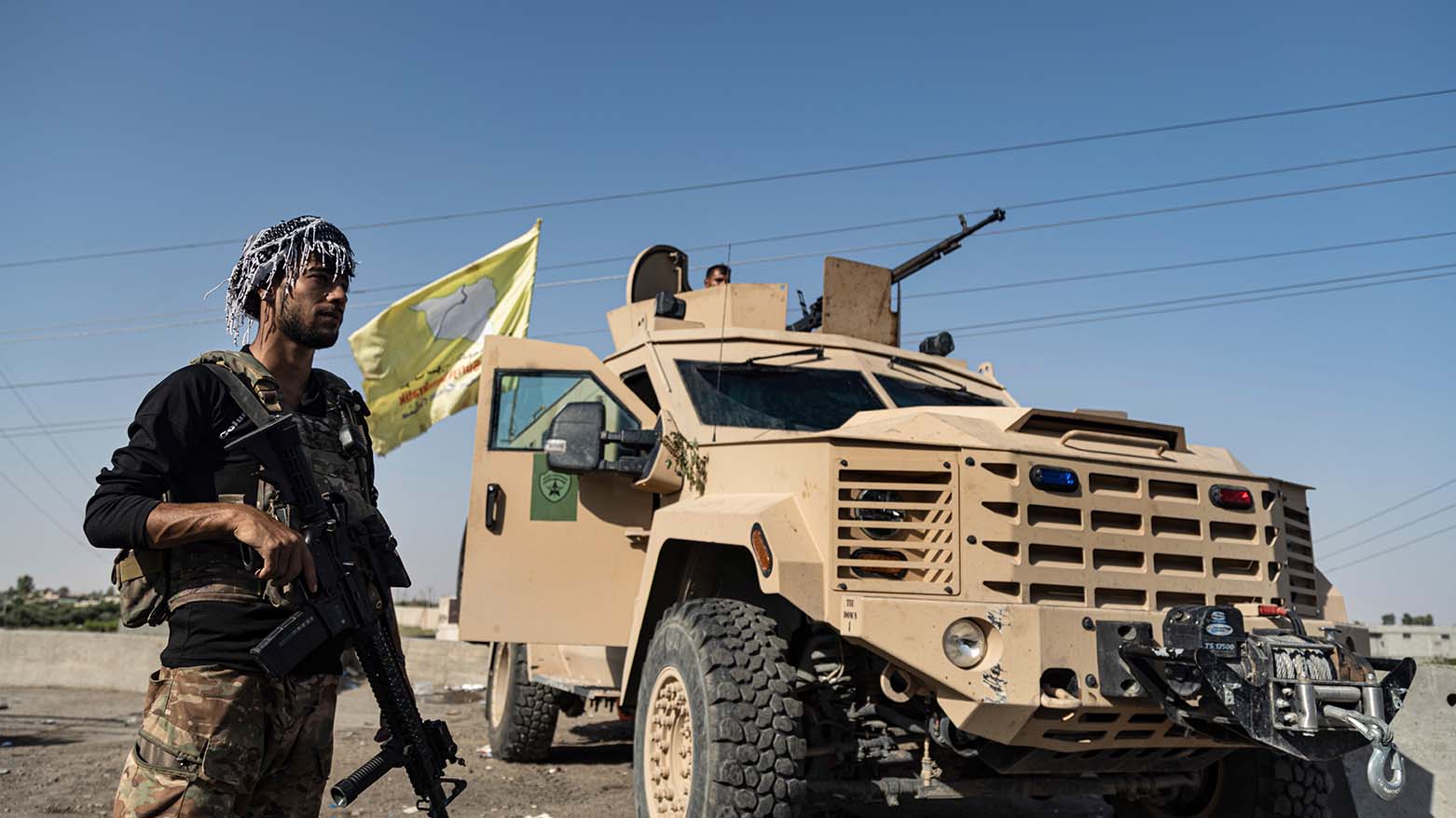Anti-SDF Arab tribal militia groups in Deir ez-Zor backed by Iran and Syrian regime: Pentagon Report

ERBIL (Kurdistan 24) – According to the latest U.S. Defense Department Lead Inspector General report to the U.S. Congress was released on Friday, Arab tribal militia groups that have continued to attack the US-backed Syrian Democratic Forces (SDF) and are backed by Iran and the Syrian regime.
The most recent Lead Inspector General’s (IG) report on Operation Inherent Resolve, the US-led campaign against ISIS— which is mandated by the U.S. Congress and to which Inspectors General from the Defense Department, State Department, and USAID contribute— covers the period from October 1 through December 31, 2023.
Read More: Armed clashes continue in Deir ez-Zor
Damascus-backed tribal insurgent groups have continued to attack SDF forces in Deir ez-Zor since August, after the SDF arrested Abu Khawla, the former dismissed head of the Deir ez-Zor Military Council, leading to fierce skirmishes.
The tribal militias are led by Al-Akidat tribal leader Sheikh Ibrahim al-Hifl, the self-proclaimed Commander-in-Chief of the tribal forces, who is based in areas under control of Damascus.
Also in October, tribal fighters launched a large-scale attack against an SDF headquarters and several SDF checkpoints in Deir ez-Zor, the Pentagon report stated. “Though the heaviest fighting has since subsided, skirmishes continued,” the report said.
Read More: Syrian government sends groups to attack SDF in Deir ez-Zor: SDF
The U.S.-led Coalition reports that these tribal fighters “have emerged as a “full-fledged resistance movement” that is receiving explicit support from the Syrian regime and its Iranian allies on the western side of the Euphrates River in Deir ez-Zor, “where resistance fighters resupply, rearm and launch attacks across the river in SDF-controlled villages on the eastern side.”
The U.S.-led Coalition said that while Arab militias are unlikely to gain control over areas held by the SDF, the fighting in September forced the SDF to shift a significant portion of its forces and military equipment into Deir ez-Zor governorate to counter the increasingly organized resistance movement.
Read More: Four Asayish members killed by Turkish drone strike in Syria
This comes amidst a heavy Turkish air campaign in northeast Syria. “The Turkish attacks degraded SDF financial resources and forced the SDF to “split its attention between two possibly existential threats,” the report quoted the U.S.-led Coalition.
“The SDF reduced patrols in southern and eastern Dayr az Zawr (Deir ez-Zor) where ISIS has traditionally had the most support and freedom of movement, allowing the group to escalate its attack levels on isolated checkpoints in Dayr as Zawr (Deir ez-Zor) and Hasakah governorates in September, October, and November compared with the previous 90-day period,” the report said.
Moreover, the U.S.-led Coalition "assessed that while it does not have concrete evidence, there may be a wider recruitment issue with SDF, due to recent conflicts with Türkiye."
However, after Turkish strikes slowed in late October, allowing the SDF to reposition assets back in Deir ez-Zor and work with the Coalition on efforts to smooth relations with Arab tribal groups.
The report mentioned that the US-led Coalition continued to hold key leader engagements with the SDF and tribal leaders, and develop SDF capability through training programs to help calm the tensions.
The report also mentioned that Arab-SDF relations in Deir ez-Zor have deteriorated over the past year and that Arab residents of the Deir ez-Zor area “consistently complain of marginalization of their community in matters of governance and the economy as well as widespread corruption.”
Read More: SDF arrests suspects accused of working with ‘regime forces’ in Deir ez-Zor: SOHR
However, the U.S. State Department reported that the SDF retained the loyalty of the majority of the Arab population and successfully regained control over the Deir ez-Zor area, although that the fighting served to further entrench feelings of discontent.
In addition, the U.S. State Department said it recommended reforms for the Deir ez-Zor civilian and military authorities in its meetings with tribal leaders, civil society, local councils, and other stakeholders.
On Oct. 22, the SDF and the local administration held a special conference for Deir ez-Zor to address local grievances. “The conference developed clear steps that aggrieved communities in Dayr az Zawr expected the SANES (Autonomous Administration) and SDF to take to re-stabilize the region,” the report said.
On Sunday, the SDF reported that Syrian regime-backed fighters on Friday killed five members of the SDF in the eastern countryside of Deir ez-Zor.
